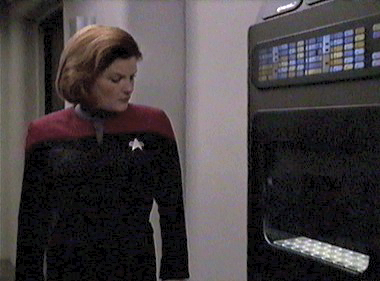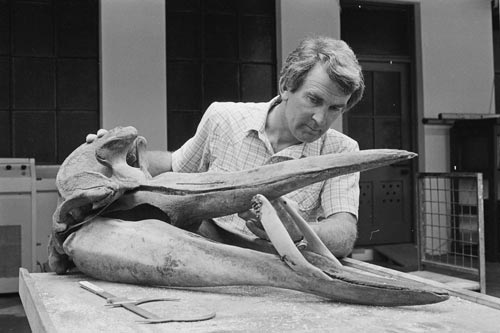3D modeling, Mac-compatible, under $600. Built by one of the original dudes from MakerBot.
Early reviews have been positive. What's the catch?
jg
3D modeling, Mac-compatible, under $600. Built by one of the original dudes from MakerBot.
Early reviews have been positive. What's the catch?
jg
3d printers have really come down in price in the last few years. That's pretty much the sweet spot that would tempt me to buy one and make me wish we had one when I was doing SAE.
Now to find that copy of CATIA....
Ohh, JG. Your words excite me like no man ever has before.... Ok, for the unitiated, let's say I wanted to build a model of my car, or a 3D portrait of my kids. Where would that data come from?
JG Pasterjak wrote: Solidoodle 3D modeling, Mac-compatible, under $600. Built by one of the original dudes from MakerBot. Early reviews have been positive. What's the catch? jg
never used 3-d printers, so this is hearsay:
you need to spring for the heated platform/chamber or the printed layers may not adhere to each other well. Also, the small chambers limit what you can make. Like cameras or aquariums, spend more and you can do more.
DrBoost wrote: Ohh, JG. Your words excite me like no man ever has before.... Ok, for the unitiated, let's say I wanted to build a model of my car, or a 3D portrait of my kids. Where would that data come from?
3-d scanner. Jay Leno's guys are using a NextEngine 3-D scanner to scan old car parts.
http://www.youtube.com/watch?v=ggvzcGdZsTc
They can then use other machines to print replicas, and use them to make new parts.
JoeyM wrote:JG Pasterjak wrote: Solidoodle 3D modeling, Mac-compatible, under $600. Built by one of the original dudes from MakerBot. Early reviews have been positive. What's the catch? jgnever used 3-d printers, so this is hearsay: you need to spring for the heated platform/chamber or the printed layers may not adhere to each other well. Also, the small chambers limit what you can make. Like cameras or aquariums, spend more and you can do more.DrBoost wrote: Ohh, JG. Your words excite me like no man ever has before.... Ok, for the unitiated, let's say I wanted to build a model of my car, or a 3D portrait of my kids. Where would that data come from?3-d scanner.
or solidworks, or probably even sketchup...shoot, I remember playing with a tool that converts bitmaps in greyscale to a 3d file format that can then be converted into a toolpath. The data can be found almost anywhere.
Im interested in this for my metal casting hobby. If you want to cast something in aluminum, you have to allow for approx 1.2% shrinkage of the heated metal as the cast part cools. And the contraction is not necessarily linear, so it can be tricky. If you have to cast something very intricate, creating the pattern to mold can take a lot of time, and one wrong calculation, and youre SOL. Traditional pattern making techniques take a long time to master, and (depending on the intricacy of the part) can take a LOT of time to actually produce a moldable piece. There are cad programs that can simulate and factor the shrinkage. Use cad to design the part, and the printer to create a plastic pattern with the shrinkage already factored. You can be casting a part in the afternoon that you just dreamt up while eating your wheaties.
and dont even get me started on DMLS 3D Printing
BTW, some people area trying to DIY the scanners with webcams.
http://www.youtube.com/watch?v=VoEBJfI8kDw&feature=related
I wonder about the resolution, though
The replicator cannot be far behind!

(I know, I know...but I couldn't find a picture of a replicator with any other Captain!)
Oh, and as always, when this topic comes up I have to say it:
will somebody PLEASE 3-D print me a cross flow L-series head
http://grassrootsmotorsports.com/forum/grm/os-giken-fakeout/30970/page1/
...and a replica of a strap-toothed whale skull, complete with giant teeth
 http://www.teara.govt.nz/en/whales/7/1
http://www.teara.govt.nz/en/whales/7/1
(yes, that is a whale with teeth that vaguely resemble boar tusks)
 http://www.studioschouten.com.au/viewdetail.asp?ID=62
http://www.studioschouten.com.au/viewdetail.asp?ID=62
The xbox kinect is actually a really cool device that is a 3D scanner, or at least can be used as one. I saw it in a Pop. Sci. mag a while back.
an example: http://www.cnczone.com/forums/3d_scanning/145952-awesome_free_3d_scanner_software.html
Free laser scanner software:
http://www.david-laserscanner.com/
Set it up with a web cam, laser line, and a couple white poster boards.
3D printers are great for making little plastic bits and pieces that break off your car too. Gotta get one for myself.
Javelin wrote: Eff me, I need to buy one and start the model-car making business I've always dreamed of...
Some guys in my club are looking into one. There are a couple guys out there offering amazing things from them.
I used to have an FDM 3d printer. It was one of the "higher end" consumer level machines (above DIY). Be very very cautious of the consumer level 3d stuff. I haven't heard much about the Solid doodle yet, but I hear good things about the Cubify (at least it has a heated bed).
http://cubify.com/
What is the soliddoodle missing that the good stuff has:
-accuracy (its not bad though)
-dissolveable support material
-heated build chamber
-build volume
The support material and heated chamber are HUGE benefits though. I can't wait for the day those reach consumer level stuff and are integrated well.
4cylndrfury wrote: Im interested in this for my metal casting hobby. If you want to cast something in aluminum, you have to allow for approx 1.2% shrinkage of the heated metal as the cast part cools. And the contraction is not necessarily linear, so it can be tricky. If you have to cast something very intricate, creating the pattern to mold can take a lot of time, and one wrong calculation, and youre SOL. Traditional pattern making techniques take a long time to master, and (depending on the intricacy of the part) can take a LOT of time to actually produce a moldable piece. There are cad programs that can simulate and factor the shrinkage. Use cad to design the part, and the printer to create a plastic pattern with the shrinkage already factored. You can be casting a part in the afternoon that you just dreamt up while eating your wheaties.
RE: Investment Casting:
3D Systems has a ProJet that prints in wax specifically for this.
Stratasys has a nice paper detailing the considerations for using ABS as your investment cast part, shrinkages, etc. http://www.fortus.com/~/media/Main/Files/Applications/AG-InvestmentCasting-0109.ashx
When my Epson can crank out a cheeseburger, it will be a good day
jg
JG Pasterjak wrote: When my Epson can crank out a cheeseburger, it will be a good day jg
JG Pasterjak wrote: When my Epson can crank out a cheeseburger, it will be a good day jg
Holy berkeleying E36M3. Continuing down this path will lead to a replicator one day..
I printed out Yoda and part of a VW Bus with my Makerbot.
I have budgeted for two Solidoodles in the Fall.
Some day, we'll have all our biometrics on a card (gathered partly by a laser scan of our body by a device like Lenos Next Engine Scanner. We'll swipe the card on our Replicator/3D printer and print out a pair or eyeglasses with a prefect prescription and style. Or a pair or shoes, each one a a perfect fit for each foot. Or a shirt with each sleeve the perfect length. Etc.
Brave New World. Cheeseburgers included. ![]()
Very soon the capability will extend to organic materials.
There will come a time when you can print a new kidney by pushing a button. I know a well know scientist working on the problem right now.
The replicator is coming sooner than we think...
ProDarwin wrote:4cylndrfury wrote: Im interested in this for my metal casting hobby. If you want to cast something in aluminum, you have to allow for approx 1.2% shrinkage of the heated metal as the cast part cools. And the contraction is not necessarily linear, so it can be tricky. If you have to cast something very intricate, creating the pattern to mold can take a lot of time, and one wrong calculation, and youre SOL. Traditional pattern making techniques take a long time to master, and (depending on the intricacy of the part) can take a LOT of time to actually produce a moldable piece. There are cad programs that can simulate and factor the shrinkage. Use cad to design the part, and the printer to create a plastic pattern with the shrinkage already factored. You can be casting a part in the afternoon that you just dreamt up while eating your wheaties.RE: Investment Casting: 3D Systems has a ProJet that prints in wax specifically for this. Stratasys has a nice paper detailing the considerations for using ABS as your investment cast part, shrinkages, etc. http://www.fortus.com/~/media/Main/Files/Applications/AG-InvestmentCasting-0109.ashx
I have thought about printing waxes for investing, but you lose the repeatability that you get with a traditional pattern and sand mold.While investing does give youa better as-cast surface finish, and the ability to do very complex or intricate pieces without finish machining or complex molds, I think that the benefit the repeatability and productivity of a durable pattern over its lifetime are a good tradeoff for the benefits of investment cast parts.
...now, set up the machine to print you several hundred of the same wax...and you may be on to something ![]()
SVreX wrote: Very soon the capability will extend to organic materials. There will come a time when you can print a new kidney by pushing a button. I know a well know scientist working on the problem right now. The replicator is coming sooner than we think...
I don't want to wait 40 minutes for an extruded cheeseburger. I can get one of those at checkers. ![]()
JG Pasterjak wrote: When my Epson can crank out a cheeseburger, it will be a good day jg
That requires a matter compiler.
You'll need to log in to post.